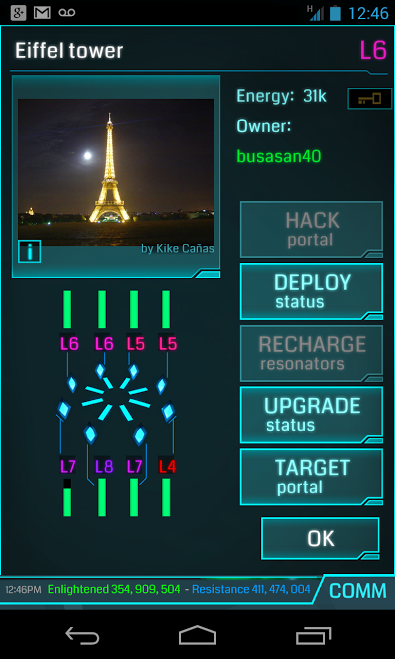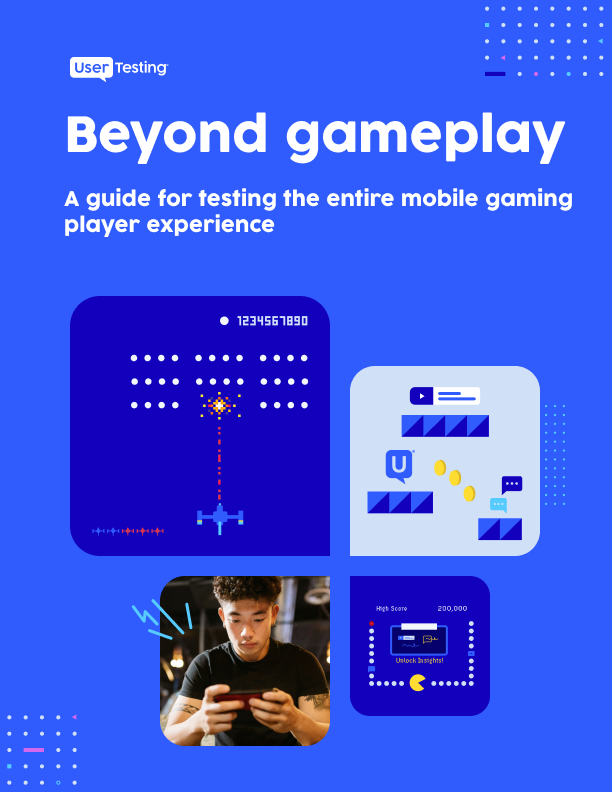
Exploring augmented reality with the mobile game Ingress
“The world around you is not what it seems.”
Or so the makers of an augmented reality, GPS-enabled, massively multiplayer mobile game called Ingress would like you to believe.
It’s a common everyday occurrence to see people walking the streets of towns and cities around the world while gazing at the smartphone in their hand. Many of these people may actually be navigating to a nearby Ingress portal or locked in combat with another player.
Ingress is not the only popular GPS-enabled game on the mobile market. As our devices gain more accurate GPS capabilities and the mobile gaming market grows, GPS-enabled, augmented reality games are becoming more popular. Another game, Zombie Run, is especially for those joggers that want to imagine they are being hunted by zombies.
As for Ingress, one way of thinking of the game is like a science fiction version of Capture the Flag. Ingress was originally released for Android devices in 2012 by Niantic Labs, a startup within Google. As of 2014, it can now be played on both Android and iOS devices. Players begin the game by selecting a faction: the Resistance or the Enlightened. Both factions are seeking to gather as much XM, or Exotic Matter, while controlling as many portals as possible in their local area. The portals are connected to real-world locations such as museums, churches, and monuments.

"Portals" in Ingress are linked to real-world landmarks.
Players must actually get up and go walking their neighborhoods to find and control the portals in the game. The portals can be hacked to gain in-game items such as weapons, powercubes, and resonators. If the portal belongs to the enemy faction, it can be attacked to weaken, destroy and ultimately gain control of it. Ingress is growing in popularity and, as of 2014, boasts a player base of 7 million people worldwide.
An exploratory study of Ingress combined with our Mobile Recorder provided a unique opportunity to collect findings on the experience of playing an augmented reality game out in the world.
Methodology
We recruited four experienced Ingress players from around the U.S. to participate in this study, which on average took about 10-15 minutes to complete.
Users played the game as they normally would while out and about in locations near Ingress portals. Users were tasked with giving their overall impressions of the initial map screen and the player profile screen, as well as feedback and suggested improvements to the hacking and attacking process. As an added bonus, we also asked users to open the cameras on their smartphones and show us the real-world locations of the portals they were interacting with in game.
Results
Map screen impressions
Initially, users were asked to give their impressions of the Map Screen. Most game play takes place from this Map Screen. Users can see all portals in a nearby area: blue for the Resistance faction, and green for the Enlightened faction. The small blue triangle near the center of the screen represents the player’s GPS location.
In our study, 3 out of 4 users stated that they had difficulty navigating toward portals due to GPS inaccuracy.
Also, the map shows a very limited range of the area around the player. All 4 users said they would like to have the ability to zoom out and see a wider area on the map. The Map Screen in the game, often called a Scanner by players has a range of 40 meters.
Interacting with real-world locations
To get a taste of how everyday players interact with the world around them via the user interface of Ingress, we asked users to open the camera on their phones and show us the portal locations near them.
Users were playing in a range of locations from church parking lots to public parks and the common areas of business plazas. Ingress portals are most often located in public spaces such as churches, landmarks, and parks.
Being fully involved in the game requires walking or driving around your neighborhood.
Hacking and attacking
The main purpose of the game is to get physically close to portal locations so a player can hack (gain in-game items) and attack (damage enemy portals). Hacking is done by simply interacting with the portal. Attacking requires in-game items called XMPs as weapons to damage enemy portals.
All of our users were experienced players and showed off their gameplay skills. However, all 4 players, while being experienced, had not played in some time. They all noted difficulty in remembering how to attack portals.
This exposes a key issue of memorability in relation to Ingress game play. Memorability is one of Jakob Nielsen’s components of usability and is defined as “When users return to the design after a period of not using it, how easily can they reestablish proficiency?”
As an example, 1 user had difficulty remembering where they should stand in relation to the real world portal location to do the most damage with an attack.
Hacking portals also exposed memorability issues. An easy method for hacking a portal is to long press on the Map Screen. However, one user had completely forgotten this was a feature. Also another player would have liked to see more specific directions or help tutorials accessible throughout game play. Improving the hacking feature with the ability to “auto-hack” portals as a player walked by, or hack multiple portals at once, was suggested by two users. These feature suggestions relate to the boring (but required) repeat action that constant hacking can be in-game.
Final thoughts
All four users in this study stated that they did enjoy playing Ingress. However, the overall experience of the game is designed to be at its best when played within a community of players. This can be both a strength and a weakness to the game. The majority of active Ingress play happens in large urban environments. Two users specifically stated they don’t play as often as they did in the past due to a lack of portals and players in their local areas.
Also, all four users, while experienced, had not played in some time. This uncovered overall issues related to memorability within the game interface. Players had difficulty remembering specifics about in-game items and the methods for attacking portals.
However, owing to the overall popularity of the game, users were more than willing to wander the streets of their neighborhoods in attempts to find the strange blue and green glowing portals displayed on their smartphones and locked to real world locations.
The world may not be what it seems, and every person standing on a street corner looking down at their mobile devices may not be simply texting a friend or navigating to the nearest Chinese takeout. They could be defending the world from alien energy, or seeking to enlighten the world via alien energy, depending on your perspective.
In this Article

Beyond gameplay
Beyond gameplay


